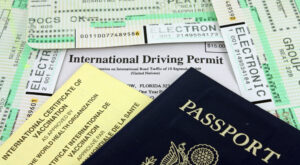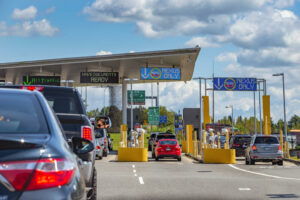
In order to drive in Canada international drivers have to meet certain requirements at the border. You can obtain an International drivers licence to stay out of trouble while travelling in foreign countries that have different licence requirements. An international traveler should carry a passport or a similar document. This gets passed to the border officers between the U.S. and Canada. The individual also needs to provide proof of the vehicles ownership and be prepared to answer questions like the reason for travel, length of stay etc. If there are children travelling then they need documentation too.
Children less than 40 pounds have to use a car seat. International travellers need to know that seat belts are mandatory in Canada. An international driving permit is a special licence for tourists and allows motorists to drive in international traffic without testing or applying. It simply proves that they have a valid licence from their country. The international driving permit can also be used as extra identification. It includes a multilingual translation of your Canadian licence. Many car rental centers will ask for it. The nice thing about having this permit is it allows you to get through borders, checkpoints and other areas faster. You can get one through the Canadian Automobile Association. Here are some of the points it covers:
- accepted in 150 countries
- carries details in nine languages
- proof you hold a drivers licence in your own country
- lets you drive in most foreign countries for emergencies or normal IDP details
You may also need to get an insurance card before travelling but U.S. licenses are accepted in Canada. The speed limits are different in different places. In rural highways you can drive 100km an hour and on highways and city roads it is 80km/hr and 50km/hr. In Canada, there are speed cameras and radar traps to catch speeders. Americans need to know that the driving rules and road conditions are different in Canada. In Canada people drive on the right side of the road. Canadian roads are very long so make sure you have food and water because accidents happen due to tiredness. Winter in Canada can be brutal and there are heavy snowfalls and icy roads. You should be equipped with snow tires and some provinces will require them.
Many highways don’t have merging lands for incoming traffic and rapid lane changes and tailgating are common for Canadian drivers. The fact is that many Canadians run red lights, so be careful when going when the lights turn green. You have to stop for school buses and pull over for emergency vehicles in Canada. The signs and symbols are almost the same as other countries, but have symbols instead of text. You can’t talk on a mobile phone while driving because it is illegal. You can’t drink and drive in Canada. If you drive while drunk it is a criminal offense. The penalties are heavy and any previous infraction could mean you get booted from the country. If stopped by the police remain in your car and wait for instructions. Never try to bribe the police in Canada; it is considered a serious crime.




